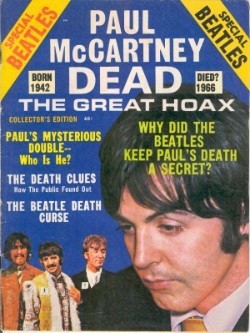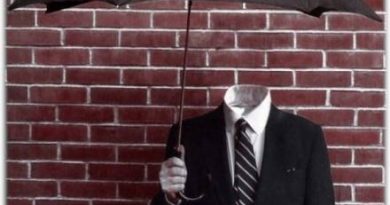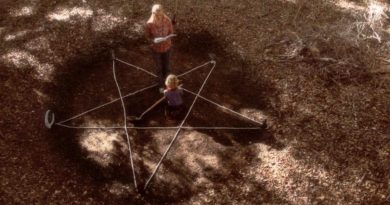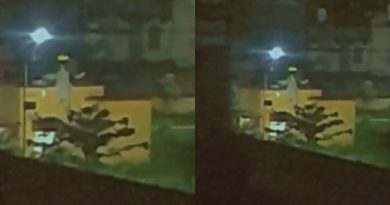Urban Legend – Paul Mccartney is dead !!
“Paul is dead” is an urban legend alleging that Paul McCartney of The Beatles died in 1966 and was replaced by a look-alike and sound-alike.
The legend hinges on supposed hints among the Beatles’ many recordings and presumed to be deliberately placed by The Beatles or others. Hundreds have been cited at various times; they include statements heard when a song is played backwards, symbolic interpretations of obscure lyrics, and ambiguous imagery on album covers. Some of these have become well known, such as the fact that on the cover of Abbey Road, McCartney is the only barefooted Beatle and is out of step with the others.
It is often unclear how many proponents of this story spread it as a joke, as opposed to a real conspiracy theory. The rumour has been the subject of much sociological examination, since its development, growth, and rebuttal took place very publicly.
A claim that a hoax was perpetrated by The Beatles themselves, either as a joke or to stimulate record sales, was denied by all three original band members.
Background
The first known printing of this urban legend was in the Drake University paper, the Times-Delphic, on September 17, 1969. The rumours surrounding McCartney began in earnest on October 12, 1969, when someone telephoned Russ Gibb (a radio DJ on WKNR-FM in Dearborn, Michigan serving the Detroit market). Identifying himself as “Tom” (allegedly Tom Zarski of Eastern Michigan University), the caller announced that McCartney was dead. He also asked Gibb to play “Revolution 9” backwards. Gibb thought he heard “Turn me on, dead man.” Gibb also produced (with John Small and Dan Carlisle) The Beatle Plot, an hour-long radio show on the rumour. The show aired on WKNR-FM in late 1969 and has been repeated in the years since on Detroit radio.
Fred Labour and John Gray, juniors at the University of Michigan, published a review of Abbey Road called “McCartney Dead; New Evidence Brought to Light”, itemizing various “clues” of McCartney’s death on Beatles album covers, in the October 14, 1969 issue of the Michigan Daily. Terry Knight, a former Detroit DJ and then singer on Capitol Records, had visited the Beatles in London for the August 1968 White Album session during which Ringo Starr walked out. Although Terry’s song, “Saint Paul”, was written about the impending breakup of The Beatles, it was picked up by radio stations in autumn 1969 as a tribute to “the late” Paul McCartney.
The rumour gained momentum when Roby Yonge, an overnight disc jockey on the Top 40 station WABC in New York, discussed it “incoherently” on October 21, 1969. Yonge was immediately fired for making the broadcast. WABC, a 50,000-watt clear-channel station, could be heard clearly in 38 states, and as far as Africa’s Atlantic coast. Soon, national and international media picked up on the story and a new “Beatle craze” took off. Celebrity lawyer F. Lee Bailey hosted an hour-long television special in which he both prosecuted and defended the claims, concluding ultimately that the rumor was unprovable.
The rumour is the subject of several books, including American journalist Andru J. Reeve’s 1994 book Turn Me On, Dead Man (ISBN 1-4184-8294-3) and English author Benjamin Fitzpatrick’s 1997 book, Rumours from John, George, Ringo and Me.
“Paul is dead” analyst Joel Glazier hypothesized[8] in 1978 that John Lennon’s love of wordplay and studio editing may have been responsible for some clues in later albums, but that after cult-leader Charles Manson claimed The Beatles were hiding references to an upcoming racial war in their song “Helter Skelter”, the band members chose not to reveal the joke.
The advent of the Internet gave “Paul is dead” rumours new life, with some websites claiming that photographic evidence proves that the McCartney before and after late 1966 could not be the same man.
The story of the alleged death
The most common tale is that on Wednesday, 9 November 1966 at 5 am, McCartney, while working on the Sgt. Pepper’s Lonely Hearts Club Band album, stormed out of a recording session after an argument with the other Beatles and rode off in his Aston Martin which he subsequently crashed into a lamp post, and died.
The story was pieced together from the lyrics of multiple Beatles songs. The most common narrative includes the following pieces of evidence:
1. “He didn’t notice that the lights had changed” (“A Day in the Life”).
2. He then crashed into a lamp-post (a car crash sound is heard in “Revolution 9” and “A Day in the Life”).
3. He was pronounced dead on a “Wednesday morning at 5 o’clock as the day begins” (“She’s Leaving Home”)
4. Nobody found this out because the news was withheld: “Wednesday morning papers didn’t come” (“Lady Madonna”).
5. A funeral procession was held days later, as was supposedly implied on the Abbey Road album cover by the Beatles’ clothing. (John Lennon dressed all in white, like a clergyman. Ringo Starr wore a black suit as an undertaker would. Paul McCartney wore a suit without shoes, a common custom for corpses being buried, and walked out of step with the other Beatles. George Harrison’s denim outfit resembled that of a gravedigger.)
6. Adding fuel to the legend is the ending of “Strawberry Fields Forever”. Some believed John said “I buried Paul” in a slow deep voice over the final refrain. He later denied that, stating that he had said “cranberry sauce”.
According to believers, McCartney was replaced with the winner of a McCartney look-alike contest. The name of this look-alike has been recorded as William Shears Campbell, Billy Shears (the name of the fictitious leader of Sgt. Pepper’s Lonely Hearts Club Band), William Sheppard (based on the alleged inspiration for the song “The Continuing Story of Bungalow Bill”), or some combination of the names.
There is no evidence of any crash in which McCartney was involved, although during the first week of January 1967, McCartney’s custom-made Mini Cooper was wrecked by a friend on the M1 Motorway outside London. McCartney was involved in a moped crash on December 26, 1965, which resulted in a chipped tooth and the scar on his lip that can be seen on promotional videos for the “Paperback Writer”/”Rain” single, made shortly after the crash, in May 1966. According to McCartney, his desire to hide the scar on his lip was the impetus to grow a moustache.




A Paul McCartney look-alike contest? Seriously? Wouldn’t this have had to have been advertised? It would have been in every newspaper, on radio and on telly. It was just a publicity stunt to generate fresh sales and nothing more. They were all into psychedelic drugs at the time, which explains a lot. I’m waiting for the Sid Vicious look alike contest…